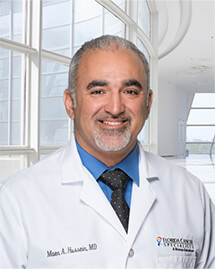Author(s): John V. Heymach, M.D., Ph.D., David Harpole, M.D., Tetsuya Mitsudomi, M.D., Ph.D., Janis M. Taube, M.D., Gabriella Galffy, M.D., Ph.D., Maximilian Hochmair, M.D., Thomas Winder, M.D., Ph.D., Ruslan Zukov, M.D., Ph.D., Gabriel Garbaos, M.D., Shugeng Gao, M.D., Ph.D., Hiroaki Kuroda, M.D., Ph.D., Gyula Ostoros, M.D., Tho V. Tran, M.D., Jian You, M.D., Ph.D., Kang-Yun Lee, M.D., Ph.D., Lorenzo Antonuzzo, M.D., Ph.D., Zsolt Papai-Szekely, M.D., Hiroaki Akamatsu, M.D., Ph.D., Bivas Biswas, M.B., B.S., M.D., Alexander Spira, M.D., Ph.D., Jeffrey Crawford, M.D., Ha T. Le, M.D., Ph.D., Mike Aperghis, Ph.D., Gary J. Doherty, M.D., Ph.D., Helen Mann, M.Sc., Tamer M. Fouad, M.D., Ph.D., and Martin Reck, M.D., Ph.D. for the AEGEAN Investigators*
BACKGROUND
Neoadjuvant or adjuvant immunotherapy can improve outcomes in patients with resectable non–small-cell lung cancer (NSCLC). Perioperative regimens may combine benefits of both to improve long-term outcomes.
METHODS
We randomly assigned patients with resectable NSCLC (stage II to IIIB [N2 node stage] according to the eighth edition of the AJCC Cancer Staging Manual) to receive platinum-based chemotherapy plus durvalumab or placebo administered intravenously every 3 weeks for 4 cycles before surgery, followed by adjuvant durvalumab or placebo intravenously every 4 weeks for 12 cycles. Randomization was stratified according to disease stage (II or III) and programmed death ligand 1 (PD-L1) expression (≥1% or <1%). Primary end points were event-free survival (defined as the time to the earliest occurrence of progressive disease that precluded surgery or prevented completion of surgery, disease recurrence [assessed in a blinded fashion by independent central review], or death from any cause) and pathological complete response (evaluated centrally).
RESULTS
A total of 802 patients were randomly assigned to receive durvalumab (400 patients) or placebo (402 patients). The duration of event-free survival was significantly longer with durvalumab than with placebo; the stratified hazard ratio for disease progression, recurrence, or death was 0.68 (95% confidence interval [CI], 0.53 to 0.88; P=0.004) at the first interim analysis. At the 12-month landmark analysis, event-free survival was observed in 73.4% of the patients who received durvalumab (95% CI, 67.9 to 78.1), as compared with 64.5% of the patients who received placebo (95% CI, 58.8 to 69.6). The incidence of pathological complete response was significantly greater with durvalumab than with placebo (17.2% vs. 4.3% at the final analysis; difference, 13.0 percentage points; 95% CI, 8.7 to 17.6; P<0.001 at interim analysis of data from 402 patients). Event-free survival and pathological complete response benefit were observed regardless of stage and PD-L1 expression. Adverse events of maximum grade 3 or 4 occurred in 42.4% of patients with durvalumab and in 43.2% with placebo. Data from 62 patients with documented EGFR or ALK alterations were excluded from the efficacy analyses in the modified intention-to-treat population.
CONCLUSIONS
In patients with resectable NSCLC, perioperative durvalumab plus neoadjuvant chemotherapy was associated with significantly greater event-free survival and pathological complete response than neoadjuvant chemotherapy alone, with a safety profile that was consistent with the individual agents. (Funded by AstraZeneca; AEGEAN ClinicalTrials.gov number, NCT03800134. opens in new tab.)
Author Affiliations
From the Department of Thoracic–Head and Neck Medical Oncology, University of Texas M.D. Anderson Cancer Center, Houston (J.V.H.), and US Oncology Research, the Woodlands (A.S.) — both in Texas; the Department of Surgery, Duke University Medical Center (D.H.), and Duke Cancer Institute (J.C.) — both in Durham, NC; the Division of Thoracic Surgery, Department of Surgery, Kindai University Faculty of Medicine, Osaka-Sayama (T.M.), the Department of Thoracic Surgery, Aichi Cancer Center Hospital, Aichi (H.K.), and Internal Medicine III, Wakayama Medical University, Wakayama (H.A.) — all in Japan; the Bloomberg–Kimmel Institute for Cancer Immunotherapy, Johns Hopkins Kimmel Cancer Center, Baltimore (J.M.T.); Törökbalint Institute of Pulmonology, Törökbálint (G. Galffy), Koranyi National Institute for TB and Pulmonology, Budapest (G.O.), and the University Teaching Hospital of Fejér County, Székesfehérvár (Z.P.-S.) — all in Hungary; the Department of Respiratory and Critical Care Medicine, Karl Landsteiner Institute of Lung Research and Pulmonary Oncology, Klinik Floridsdorf, Vienna (M.H.), and the Department of Hematology, Oncology, Gastroenterology and Infectiology, Landeskrankenhaus Feldkirch, Feldkirch (T.W.) — both in Austria; Krasnoyarsk State Medical University, Krasnoyarsk, Russia (R.Z.); Fundación Estudios Clínicos, Santa Fe, Argentina (G. Garbaos); the Thoracic Surgery Department, National Cancer Center–National Clinical Research Center for Cancer–Cancer Hospital, Chinese Academy of Medical Sciences and Peking Union Medical College, Beijing (S.G.), and the Department of Lung Cancer, Tianjin Medical University Cancer Institute and Hospital, National Clinical Research Center for Cancer, Tianjin’s Clinical Research Center for Cancer, Key Laboratory of Cancer Prevention and Therapy, Tianjin (J.Y.) — both in China; the Oncology and Chemotherapy Department, University Medical Center of Ho Chi Minh City, Ho Chi Minh City (T.V.T.), and No. 1 Medical Oncology Department, Hanoi Oncology Hospital, Hanoi (H.T.L.) — both in Vietnam; the Department of Internal Medicine, Shuang Ho Hospital, Taipei Medical University, New Taipei City, Taiwan (K.-Y.L.); the Clinical Oncology Unit, Careggi University Hospital, Department of Experimental and Clinical Medicine, University of Florence, Florence, Italy (L.A.); Tata Medical Center, Kolkata, India (B.B.); Virginia Cancer Specialists Research Institute, Fairfax (A.S.); AstraZeneca, Cambridge, United Kingdom (M.A., G.J.D., H.M.); AstraZeneca, New York (T.M.F.); and Lung Clinic Grosshansdorf, Airway Research Center North, German Center for Lung Research, Grosshansdorf, Germany (M.R.).
